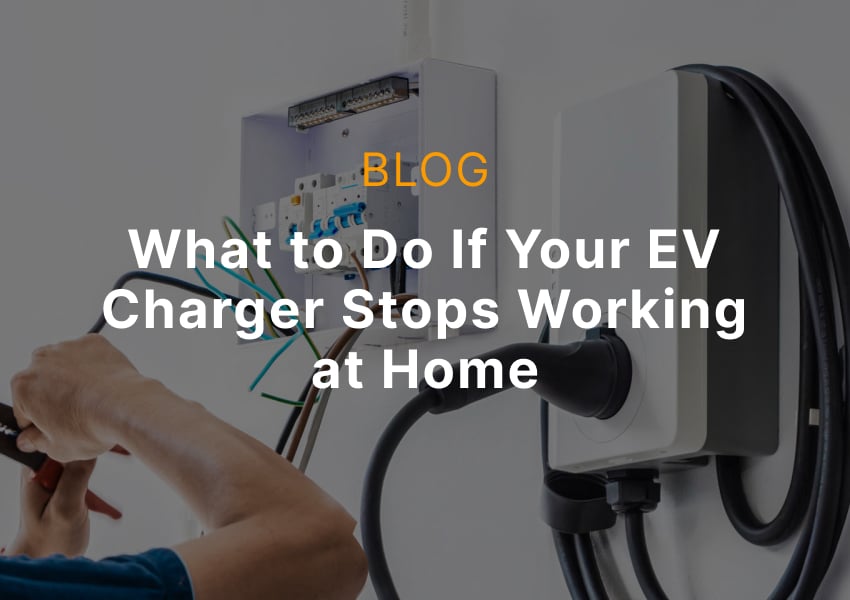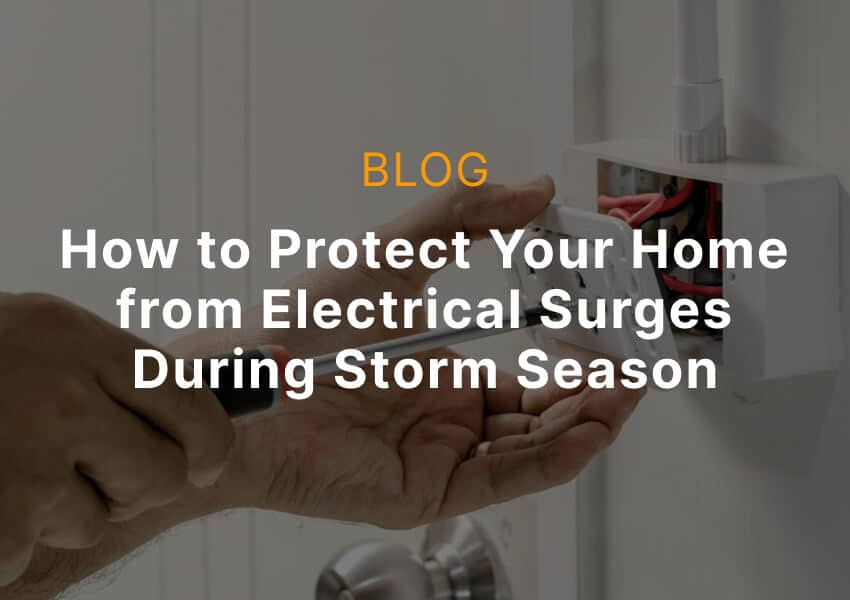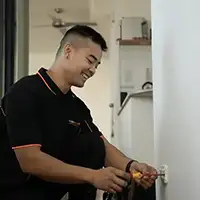Many Aussie homes have both safety switches and circuit breakers installed side by side, but knowing which is which (and what they do) isn’t always clear.
Although they look similar and may even be combined into one device, these components do very different things. One protects your home’s wiring and appliances. The other protects you and your family from electric shock.
In this guide by Powerhub Electrical, we’ll break down how each one works, why they matter, and how to tell if your switchboard is missing critical protection.
Why the Confusion Happens
Safety switches and circuit breakers often look identical at first glance, which leads many homeowners to assume they do the same job, but their roles are completely different:
Similar Appearance in the Switchboard
Both circuit breakers and safety switches are roughly the same size and are usually located in your switchboard. They have toggle switches, labels, and may be positioned next to each other. Unless clearly marked or labelled, it’s easy to confuse them—especially in older switchboards that haven’t been updated or clearly identified by an electrician.
Overlapping Function in RCBOs
Modern switchboards in Sydney homes now use RCBOs: devices that combine the functions of both a circuit breaker and a safety switch. RCBOs protect both the electrical circuit and the person using it by tripping in the event of either an overload or an electric shock hazard. This adds to the confusion, as everything looks like one uniform set of switches even though each unit does a specific job.

What Is a Circuit Breaker
A circuit breaker is designed to protect your wiring and appliances from electrical overloads or short circuits, not from electric shock. Here’s what it does and why it matters:
- Prevents Fire and Overheating: Circuit breakers monitor the flow of current through your home’s wiring. If too much electricity is drawn from a circuit, the breaker trips and disconnects power. This protects the wiring from overheating and reduces the risk of electrical fires.
- Does Not Protect Against Electric Shock: A circuit breaker is not designed to detect current leaking to earth. If you accidentally touch a live wire or if an appliance becomes live, the breaker may not respond fast enough to prevent harm. That’s why it must be paired with a safety switch.
- Responds to Overload and Short Circuits: Overloads happen when too many devices run on one circuit. Short circuits happen when active and neutral wires contact directly. Circuit breakers trip in both cases to stop damage to the system.
- Each Breaker Has a Specific Rating: Breakers are matched to each circuit’s load, usually ranging from 10 to 32 amps in Australian homes. Choosing the wrong size can result in nuisance tripping or, worse, a fire hazard.
- Common in Older and Newer Homes: All homes in Australia use circuit breakers. Older properties may use fuse-style protection, but most modern homes are fitted with circuit breakers or RCBOs as part of the main switchboard.
What Is a Safety Switch
A safety switch is designed to protect people from electric shock by detecting when electricity flows somewhere it shouldn’t. Here’s how it works and why it’s essential:
- Detects Current Leakage to Earth: A safety switch constantly monitors the flow of current through active and neutral wires. If it detects even a small leak to Earth, such as through a person, it disconnects power almost instantly, usually within 30 milliseconds.
- Protects People, Not Wiring: Unlike a circuit breaker, a safety switch is not focused on overloads or short circuits. Its primary purpose is to prevent electrocution or serious injury in the event of a fault or contact with live parts.
- Required by Australian Standards: Under AS/NZS 3000, all new homes and circuit upgrades must have safety switches installed on all final subcircuits, including power points, lighting, air conditioning, and wet areas. NSW law also requires RCD protection in all rental properties.
- Identifiable by a Test Button: Safety switches are easy to identify in your switchboard. They have a small test button, often marked with a ‘T’, which you can press to simulate a fault. If the switch does not trip when tested, it may need replacing.
- Not Always Present in Older Homes: Many homes built before the early 2000s may still be missing safety switches on some or all circuits. If your switchboard lacks RCD protection, it should be inspected and upgraded by a licensed electrician.

Safety Switch vs Circuit Breaker: Key Differences
Although they may look similar, these devices do very different things. Here’s how they compare:
What They Protect
- A safety switch protects people by disconnecting power when it detects current leakage, such as through a person or faulty appliance.
- A circuit breaker protects your wiring and electrical system by cutting power during overloads or short circuit.s
How They Detect Faults
- Safety switches monitor the balance between active and neutral wires and trip when current leaks to eart.h
- Circuit breakers monitor the total amount of current flowing through a circuit and trip when the load exceeds the rated limit or a short circuit occur.s
Where They Are Required
- Safety switches are mandatory on all final subcircuits in new homes or when circuits are added or altered, as per Australian standards
- Circuit breakers are standard on every circuit and required in all switchboards to protect the wiring from excess load.
What Is an RCBO
An RCBO is a modern device that combines the roles of a safety switch and a circuit breaker into one unit. Here’s why they’re now common in Australian homes:
- Provides Dual Protection: An RCBO protects both people and wiring by detecting earth leakage, overloads, and short circuits. It performs the job of both a circuit breaker and a safety switch in one device.
- Saves Space in the Switchboard: Because it combines two functions into a single unit, an RCBO helps reduce clutter and makes switchboard layouts cleaner, especially when space is limited.
- Required in Most New Installations: In modern homes and any new circuit installations in NSW, RCBOs are often used instead of installing a separate breaker and safety switch. This setup meets all requirements under AS/NZS 3000.
- Easy to Identify and Reset: Like an RCD, an RCBO has a test button to check functionality. If it trips, it can be reset quickly without needing to replace components or isolate the whole board.

Do You Have the Right Protection
Many homeowners assume their switchboard is up to standard just because everything seems to be working. But if your switchboard hasn’t been updated in years—or if it’s unclear which circuits are protected—you could be missing critical safety devices without realising it. Here’s how to check:
Look for Test Buttons and Labels
Safety switches and RCBOs have a test button marked with “T” or “Test”. This allows you to simulate a fault and confirm that the device is functioning. If the switch trips when pressed, the safety feature is working.
- Circuit breakers do not have test buttons.
- If your switchboard has no devices with a test button, it’s likely you are missing RCD protection.
- Clear labelling in your switchboard should identify each circuit and whether it’s protected by an RCD, RCBO, or just a breaker.
If you have unlabelled or confusing switchboard layouts, it’s best to have it reviewed by a licensed electrician.
Know the Age of Your System
Older switchboards, especially those installed before the early 2000s, often lack safety switches altogether. If your board still uses ceramic fuses or toggle-style breakers without RCDs, your home may not comply with current Australian Standards (AS/NZS 3000).
- Homes that haven’t had upgrades or new circuits added in over 20 years often miss mandatory protection.
- This is common in older Sydney suburbs like Marrickville, Blacktown, or Parramatta where many homes still run on outdated systems.

When to Call an Electrician
You should have your switchboard assessed if:
- You cannot identify which switch protects which circuit
- There are no visible safety switches with test buttons
- You are adding new circuits for things like an EV charger, pool pump, or air conditioning
- You are renovating, selling, or leasing out your property
- You experience frequent tripping, flickering lights, or unexplained power loss
A licensed electrician can assess your switchboard, test each circuit, and confirm whether your setup meets current NSW safety standards. If upgrades are needed, we’ll handle the entire process safely and professionally.
Call Powerhub Electrical on 0400 332 331 for a quick inspection, safety switch testing, or a no-pressure upgrade quote. We help Sydney homeowners stay safe, compliant, and confident in their home’s electrical system.
Frequently Asked Questions
Is a safety switch the same as a circuit breaker?
No. A safety switch protects people from electric shock by detecting current leakage. A circuit breaker protects wiring and appliances from overloads and short circuits. They do different jobs and both are required in a modern switchboard.
How do I know if I have safety switches installed?
Check your switchboard for devices with a test button marked “T” or “Test”. These are your safety switches or RCBOs. If you can’t find one, you may not have proper protection.
Do I need safety switches on every circuit?
Yes. Under AS/NZS 3000 and NSW regulations, all final subcircuits in homes must have RCD protection. This includes lighting, power points, and wet areas.
Can I replace a breaker with a safety switch?
Not directly. A safety switch does not provide overload protection. If you need both, your electrician may install an RCBO which combines both functions.
Do all new homes have RCBOs?
Most do. Modern switchboards are usually fitted with RCBOs on each circuit to meet current safety requirements. Older homes often need upgrades to meet this standard.





